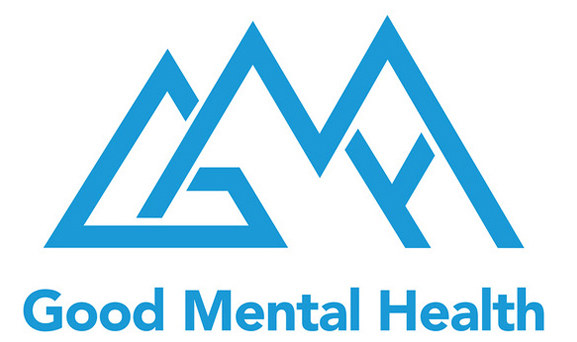We have big dreams. Future plans. Goals.
We have the best of intentions.
We write our to-do lists. We make our vision boards. We positively affirm that It. Will. Happen.
We will MAKE it happen.
Then, life happens instead.
Dishes, laundry, the J-O-B, the kids, the pets, the spouse, the yard, the boss, the family, the friends, the TV binge watching…
And those are just the mindless things that sabotage our goals. There are other, bigger, more insidious saboteurs that lurk beneath the surface, thwarting our best intentions.
Have you ever justified not doing something that you know would be good for you by catastrophizing the future?
Putting off something important because you just can’t hedge the bet that it will actually pay off?
Saying ‘no’ instead of ‘yes’ because you don’t quite believe the potential reward will turn out to be worth the effort?
Where does that mindset come from?
I’m not going to bother studying for that test next Wednesday. Who knows if I’ll even be alive next Wednesday?
Here’s the newsflash: statistically speaking, you are extremely likely to be alive next Wednesday.
So, why do we self-sabotage? Why do we bother formulating all of our goals and dreams and bucket lists just to kick them aside en lieu of the daily grind?
Fear of failure, fear of success, fear of attention, fear of ambiguity, fear of humiliation, fear of embarrassment, fear of letting down someone you care about, fear of judgment, fear of commitment… fear.
We let fear run our lives
The reason we self-sabotage and therefore fail to accomplish our goals and dreams is often rooted in old wounds we suffered in our past. These wounds often occur at a time in our lives when we most needed to feel safe, supported, and protected by those around us but were victimized instead.
Usually during childhood, when human beings are the littlest and weakest and the most vulnerable they will ever be.
One of my personal experiences came during middle school math. I raised my hand and, pointing at the gaping blank space in the middle of the equation written on the board, had the audacity to ask, “What goes there?” At which time, my algebra teacher proceeded to make fun of me, drawing smiley faces and flowers, telling me, “Anything you like. As long as you get THIS answer for X.”
He thought he was being funny. I was mortified.
I never raised my hand in a math class again. Math continued to be my worst subject all the way through college.
I was so afraid of being humiliated again in front of an audience that I changed my behavior permanently.
Self-sabotage. It’s a thing.
On a much deeper level- a subconscious level- we continue to self-sabotage for reasons we may not even be aware of. Those profound wounds from childhood cause us to permanently change our behavior in all kinds of ways. An alcoholic parent, domestic violence in the home, mental illness, addiction, loss of a family member; all life circumstances that make a child question whether their needs will be met and sometimes question their very survival.
The child learns to only live for the day. Survive today and worry about tomorrow, tomorrow.
Eventually, the child becomes an adult and while we’re busy running on the hamster wheel of life, our goals and dreams slowly fade and then disappear.
Who knows if I’ll even be alive on Wednesday?
Unresolved traumas never go away. Instead, they compound over time. No matter how fast we run, we can’t stay ahead of them for long. They eventually catch up and, when they do, the result takes the form of anxiety, depression, anger, sadness, lack of follow-through, chronic distraction, spinning our wheels, and not going anywhere…
Saying ‘no’ when we could be saying ‘yes’ to opportunities, relationships, joy, creativity, and fun.
How to stop self-sabotage: A 5 Step Process
When emotional wounds occur early in life, we learn not to trust the future. We learn that the future is a scary, unpredictable, and hostile place. Not only is it something we can’t count on or plan for, it becomes something we dread. The way to move past that dread and into possibility is by shining the light of self-awareness on our past experiences, fully understanding what has caused our wounds, and then taking compassionate baby steps in the direction of healing, allowing our faith in an abundant future to grow.
- Step 1: Intentional Reflection- Realize that self-sabotage related to pursuing your creative path is rooted in a past experience or experiences that have taught you it was unsafe to do so. Spend some time with this knowledge. Do some intentional self-reflection with the desire to identify past wounds. Start a healing journal where you can write down your personal reflections and discoveries. Remember, this is a process and you will be delighted by the changes you see over time, so write them down!
- Step 2: Identify Where Your Sabotaging Feelings Originate- Ask yourself the following questions: When was the first time I felt anxiety? Shame? Fear? Embarrassment? Intense anger? What were the circumstances when I first had these feelings? Was I able to express my emotions at the time? If so, how did I express them? If I was not able to express them, do I still feel the residual emotion inside my body now? Where do I feel this emotion lingering? Is it a tightness in my chest? A lump in my throat? A burning in my abdomen? Note your observations.
- Step 3: Name Your Goals– Ask yourself, what are the big picture goals I wish I were pursuing but aren’t? Write them down. For each one, ask yourself, How do I feel when I think about accomplishing this goal? Do I feel excited? Anxious? Fearful? Overwhelmed? Frustrated? Again, note your observations.
- Step 4: Connect to Past Wounds– After identifying your feelings related to accomplishing your goals, try to connect them back to the originating wounds you identified in Step 2. When in your past did that emotion appear for the first time? Can you make the connection that, for example, the anxiety you feel about public speaking is the same anxiety you feel when remembering the humiliation of seventh grade algebra? That red-hot, cheek-burning embarrassment from becoming the unintended center of attention may be the very thing holding back your promotion at work, which requires…public speaking! Instead of letting those old emotions hold us back without realizing why, we can choose to compassionately confront them, finally healing them. Fair warning, you will have to feel it to move through it!
- Step 5: Desensitize Slowly– Using tiny baby steps, we can allow ourselves opportunities to safely confront our fears and heal. Successfully taking one small risk at at time strengthens our faith that we can leave our comfort zones and be okay. It also allows us to confront the feelings of powerlessness we may have experienced in the past and, by taking right action in the present, heal those wounds. Take a look at your list of goals. Identify one small, relatively low-risk, action you could take today to move toward accomplishing your goal. Write it down! Remember, make it a baby step. We move past self-sabotage by allowing ourselves many tiny victories with which to rebuild our courage and strength.
If you would like a worksheet to help you through this process, I have one available for download here:

Thanks for reading today! If you are interested in learning more about moving past the things that are holding you back and moving in the direction of your dreams, see if our Creative Coaching is right for you.


 Hi, I'm Diana Brummer a psychotherapist, writer, and coach in St. Johns, Florida. I love helping people thrive in their relationships and their lives. My hope is that you find the information in these articles educational and useful. Thank you for stopping by!
Hi, I'm Diana Brummer a psychotherapist, writer, and coach in St. Johns, Florida. I love helping people thrive in their relationships and their lives. My hope is that you find the information in these articles educational and useful. Thank you for stopping by! 
